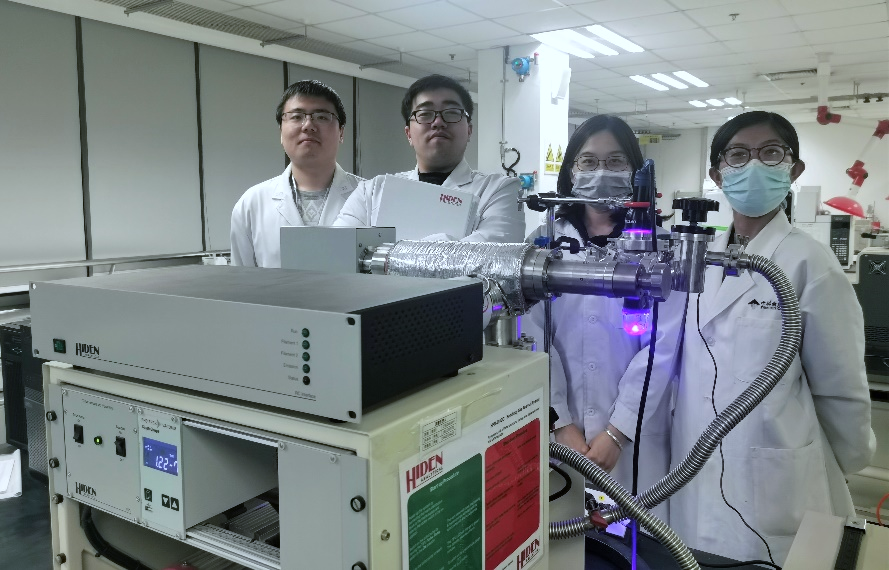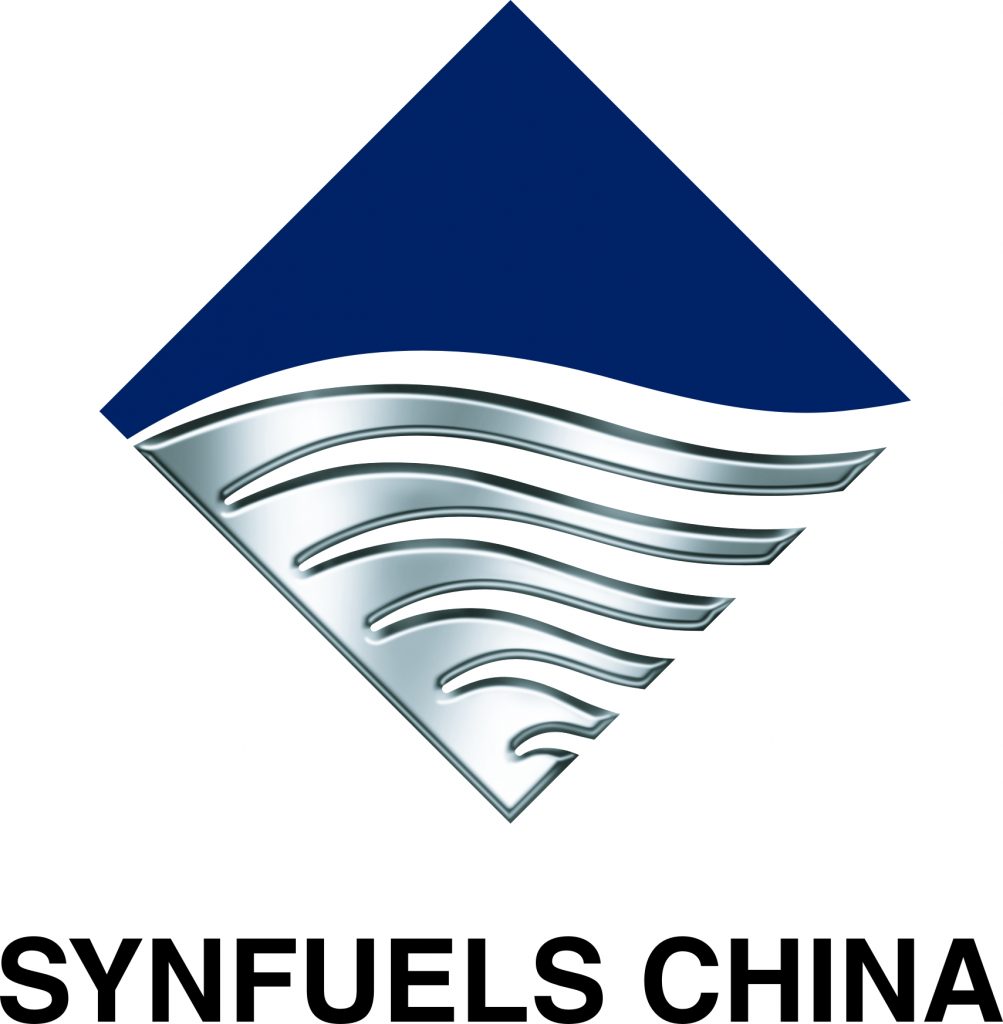Kinetic study of catalytic reactions is vital to understand the reaction mechanisms and optimize the design of catalysts. Prof. Su’s group upgraded the HPR-20 system with their customer designed gas-inlet and in-situ reactor to explore the evolution of gas-phase chemicals during photocatalytic synthetic processes under realistic conditions.
The system allows in-situ, quantitative probing of a series of gas molecules (H2, NH3, H2O, CO, O2, CO2) simultaneously with high detection limit (~ 20 ppb) and fast response (~ 200 ms). The photocatalytic hydrogen production and decomposition of organic pollutants (CO2 evolution) are ideal cases for the HPR-20 system,1-6 as the evolution of small quantity (~nmol) of gas molecules can be precisely analyzed as a function of time. Similarly, the photocatalytic CO2 and N2 reduction should be also doable by measuring the formation of CO and NH3 molecules.
In photocatalytic synthesis, the consumption rate of O2 and evolution rate of H2 are used to analyze the reaction paths and rate determining steps to help understanding of catalyst mediated reaction mechanisms.7-11 It is also convenient to use labeled gas molecules (i.e., 18O2) to characterize the involvement of lattice oxygen within the catalyst in certain oxidation reactions precisely.12 Nevertheless, the HPR-20 is a good choice to couple with other spectroscopic equipment (i.e., IR, XPS, UV-vis) for surface science study of heterogeneous catalysis13, 14.
The HPR-20 is reliable, robust, and student friendly equipment. Since 2010, more than 10 students (including himself) have used it extensively without causing serious damage on it, so quite a few more can still lean on it for graduation.

Related references:
[1] Ren Su, et. al., Designer Titania-Supported Au-Pd Nanoparticles for Efficient Photocatalytic Hydrogen Production, ACS Nano, 2014, 8, 3490-3497.
[2] Ren Su, et. al., Mechanistic Insight into the Interaction Between a Titanium Dioxide Photocatalyst and Pd Cocatalyst for Improved Photocatalytic Performance, ACS Catal., 2016, 6, 4239-4247.
[3] Y. Dai, et. al., Ren Su*, Boosting Photocatalytic Hydrogen Production by Modulating Recombination Modes and Proton Adsorption Energy, J. Phys. Chem. Lett., 2019, 10, 5381-5386.
[4] Ren Su, et. al., Promotion of Phenol Photodecomposition over TiO2 Using Au, Pd, and Au-Pd Nanoparticles, ACS Nano, 2012, 6, 6284-6292.
[5] X. Wang, L. So, Ren Su*, et. al., The influence of crystallite size and crystallinity of anatase nanoparticles on the photo-degradation of phenol, J. Catal., 2014, 310, 100-108.
[6] Q. Wu, et. al., Ren Su*, Inhibit the formation of toxic methylphenolic by-products in photo-decomposition of formaldehyde–toluene/xylene mixtures by Pd cocatalyst on TiO2, Appl. Catal. B, 2021, 291, 120118.
[7] Y. Dai, et. al., Ren Su*, Light-tuned Selective Photosynthesis of Azo- and Azoxy-aromatics Using Graphitic C3N4, Nat. Commun., 2018, 9, 60, 1-7.
[8] J. Yu, et. al., Ren Su*, Catalytic Role of Metal Nanoparticles in Selectivity Control over Photodehydrogenative Coupling of Primary Amines to Imines and Secondary Amines, ACS Catal., 2021, 11, 6656-6661.
[9] Y. Li, et. al., Ren Su*, Rationally Designed Metal Cocatalyst for Selective Photosynthesis of Bibenzyls via Dehalogenative C–C Homocoupling, ACS Catal., 2021, 11, 4338-4348.
[10] Y. Huang, et. al., Ren Su*, Photoimmobilized Ni Clusters Boost Photodehydrogenative Coupling of Amines to Imines via Enhanced Hydrogen Evolution Kinetics, ACS Catal., 2020, 10, 3904-3010.
[11] D. Lv, et. al., Ren Su*, Metal Cocatalyst Mediated Photocatalytic Dehydrogenative-condensation and Direct Condensation Cross-coupling of Aniline and Alcohol, Appl. Cat. B, 2022, 309, 121264.
[12] Y. Dai, et. al., Ren Su*, Solid Base Bi24O31Br10(OH)δ with Active Lattice Oxygen for Efficient Photo-oxidation of Primary Alcohols to Aldehydes, Angew. Chem. Int. Ed., 2019, 58, 6265-6270.
[13] X. Jin, et. al., Ren Su*, X. Yang*, Photocatalytic C-C bond cleavage in ethylene glycol on TiO2: A molecular level picture and the effect of metal nanoparticles J. Catal., 2017, 354, 37-45.
[14] C. Li, et. al., Ren Su*, In-situ probing photocatalytic C-C bond cleavage in ethylene glycol under ambient conditions and the effect of metal cocatalyst, J. Catal., 2018, 365, 313-319.

 Project summary by: Dept. Energy, Soochow University (China) & Syncat@Beijing, Synfuels China Technology Co. Ltd.
Project summary by: Dept. Energy, Soochow University (China) & Syncat@Beijing, Synfuels China Technology Co. Ltd.
Paper Reference: “Metal Cocatalyst Mediated Photocatalytic Dehydrogenative-Condensation and Direct Condensation Cross-Coupling of Aniline and Alcohol”, Applied Catalysis B: Environmental (2022) 309, 121264
Hiden Product: HPR-20
To find out more about these products visit the HPR-20 product page or if you would like to contact us directly please Send us a Message.

